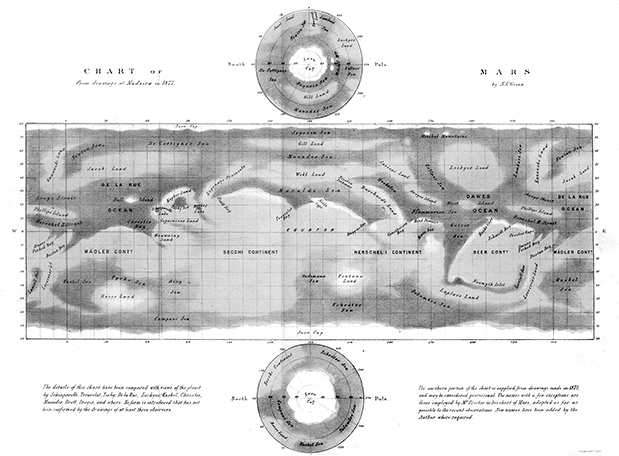After his expedition, he returned to England and used the sketches to prepare a new map [fig.4]. Incorporating his own observations with many others that had been completed in recent years, Green produced the most detailed map yet known for Mars. He used a striking naturalistic style of representation to present a cartographic view of Mars that was as similar as possible to what appeared in the telescope. [9]
Schiaparelli’s map production process was rather different. A professional Milanese astronomer, Schiaparelli was not usually a Mars observer but had decided to take advantage of the rare conditions of the red planet’s close approach to Earth in 1877. He did not travel to a remote location but instead observed Mars from his observatory in northern Italy, continuing his observations for seven months after Mars had passed Earth at its closest point. He made 31 complete drawings of Mars and more than 100 detailed pencil sketches of various Martian regions. He also prepared a number of composite views of Mars, which he sent to colleagues for comment, but his final map [fig.5] was based only on his own observations. [10]
